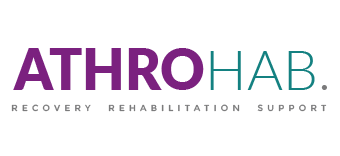The Brace Guide from Athrohab – Part 4
Medical effects of braces
Braces are used in both rehabilitation and sports medicines and provide many positive advantages. Some of the most important are:
- Heat Porous textile materials like neoprene insulate the body heat over the area where the brace has been applied. This effect is very positive since it increases the blood flow locally.
- An increased response and reaction from the muscles as well as an anti-inflammatory and analgesic effects. The analgesic effect is important since it allows activity which increases the movement of the joint.
- Wearing a brace can also retain heat in the muscle after activity.
Support and Compression
After an injury it is common that the joint feels unstable and normal loading might be difficult as well. Using a brace or an elastic bandage provides compression over the body part which can help reducing swelling and also provides a receptive support which alerts the body to pay more attention to the injured body part.
The muscular response increases and improves while wearing a support. The brace also allows activities that were too painful before.
Protection
A brace can also provide physical protection. Inflamed muscles and tendons are sensitive to pressure and impacts. The neoprene material absorbs pressure and protects the skin area. This can allow you to do activities with a support on that you didn’t dare do without. In contact sports it is common that hinged and reinforced braces are used for protection.
Joint Position Sense – Proprioception
The neuro-muscular interaction is very complex and we don’t really understand its full function. Tendons and ligaments are full of small receptors that can feel which position the joints are in. The receptors send signals to the spinal cord and brain, which then activate the muscles that can change the position and stabilize, extend or flex the joint. This ability is called proprioception, and is essential for the body to function properly.
An injury to a tendon or ligament might reduce their performance and functionality. This means that it might take a little extra time to send the signals, causing the muscle to receive the signal too late to stabilize the joint. That’s when there is a high risk of re-injury. Further injuries would lead to even slower response and worse proprioceptive ability.
A brace can stimulate the receptors in the skin. They can take over parts of the function from the receptors in the ligaments and tendons. This stimulation leads to a better joint position sense. This can also prevent a negative downward spiral with repeated injuries.
Studies* have shown that knees with degenerative diseases and inflammations have benefited from using a brace.
The joint position sense increased with over 40% for the groups that used braces on compared with the ones who did not.
It is important to note that knees without any injuries could not increase their joint position sense more than they naturally had.
* JOINT PROPRIOCEPTION IN NORMAL, OSTEOARTHRITIC AND REPLACED KNEES. D. S. BARRETT, A. G. COBB, G. BENTLEY, THE JOURNAL OF BONE AND JOINT SURGERY VOL. 73-B, No. 1, JANUARY 1991 53
Prevention
The effectiveness of preventing injuries by using bracing has been difficult to prove.
Several studies have been made on larger and more complex knee braces, however the results have shown that the incidence of injuries are pretty much the same with or without a brace.
This is only applicable for a knee that has never been injured.
Actually, injured knees can benefit from the positive effects of bracing to prevent an injury from re-occurring.
The increased joint position sense provides a higher awareness and stimulation of the body part. This, in combination with the heating effect that makes tendons and muscles more elastic, can help prevent further injuries.
It’s very important to break the cycle of a downward spiral of constant re-injuries.
A brace can also help to assure correct positioning. Carpal tunnel problems are normally caused by sleeping with a bent wrist. This increases the pressure against the nerves in the carpal tunnel. A wrist brace can help to prevent the false position that causes the pain and problems.
The Expectation Effect or ‘Placebo’
In all medical treatments, we have a so-called expectation effect or placebo effect. The expectation makes you feel much better without any medically proven treatment. This is not at all negative. On the contrary, the placebo effect is very important and if the patient has great confidence in a treatment it may help recovery.
A brace can help you to feel better and thus enable you to perform activities that you could not do without it.
Previously many patients with acute back pain were told to stay in bed until pain-free. Today we recommend activity and a back brace as support in order to be able to perform normal functions. This makes it possible to stay active, prevent muscles from getting weaker and reduce pain without taking medication.






